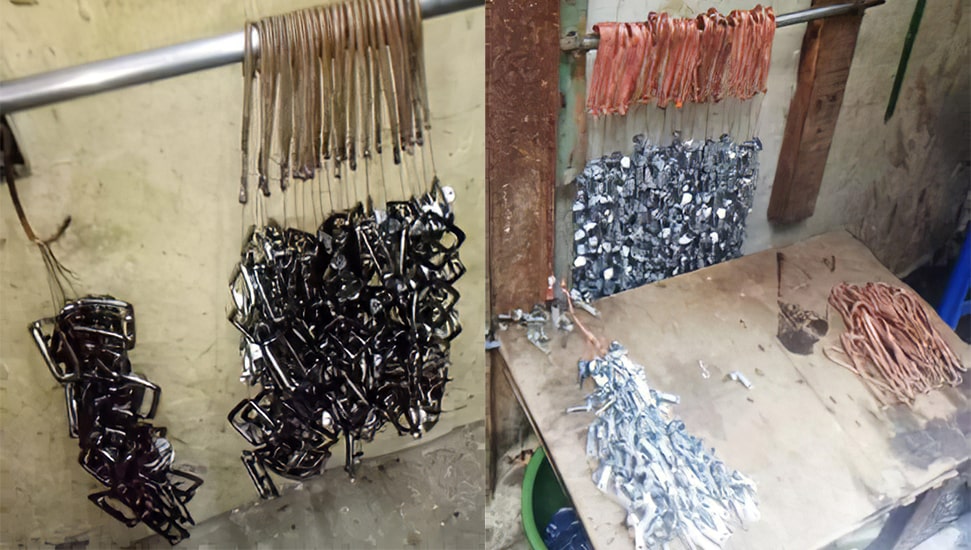Touted as the world’s largest slum, Dharavi is home to approximately 1 million people and 15,000 single-room factories. It has the highest population density of 0.34 million per km2. Most of Dharavi’s 55,000 dwellings are 1-room tenements no larger than 100 sq. feet, with very dim lighting, and negligible ventilation. Characterised by industriousness and a fully integrated manufacturing ecosystem for leather, garment, metal, food and recycling industries, it is the breathing heart of Mumbai city.
Historically, Dharavi’s most famous industry is leather. It has been a renowned leather goods hub of India, and provides employment to thousands of men and women in Dharavi, who are engaged in different processes of the leather and allied products industry. While small 1-room factories process and dye the leather and others manufacture leather products, it is the women home-based workers in Dharavi that make the most important value additions to these items. They bring home thousands of unassembled pieces of these like handbags, belts, jackets, and associated accessories and do the embellishing and finishing work on them before they reach shops and showrooms in this famed leather goods market, as well as domestic and global value chains. One such homeworker is 49-year-old Raziya Bano, who makes buckles for leather belts.
Usually buckles for leather belts, as well as zippers for leather bags come in large bunches clumped together by a metal wire, suspended on hooks. Raziya’s task is to dip these bunches in acid for thorough cleaning, and then to soak them in paint. Each of the buckle bunches are left on the hook to dry. Once the colour on the buckles is dried, the painstaking part of the process begins. She uses a pair of wire-cutters to snip the metal wire that holds all the individual buckle pieces together. The task is dangerous, as the metal wire can easily go through her fingers and hands, with the great risk of it also piercing through her eyes if she is not careful. The entire process from cleaning to painting to cutting requires tremendous concentration, a single misstep could prove to be hazardous. In Raziya’s unique case, the unit of payment is not a piece or a bunch, but it is a ’10-hour working day.’ She earns Rs. 50 for working 10 hours per day.
Raziya has severe backaches and pain in her hands constantly. She worries that she could burn her fingers or hands in acid if she does not concentrate all the time. Despite the low income and the many dangers in her job, she was saddened and worried when the work completely stopped due to the COVID-19 lockdown. Her family situation was already vulnerable and it became worse over the months of multiple strict lockdowns in Dharavi. She did not have any savings, nor did she have any stockpiles of food-grains and provisions. When asked to make a wish, she immediately says ‘sufficient foodgrains and consistent inflow of work.’ Her message for the government is consistent decently paid work, and uninterrupted good quality of education for her children.



